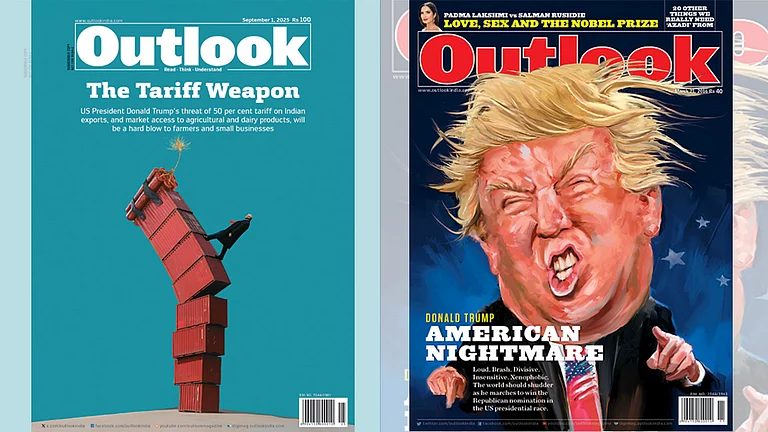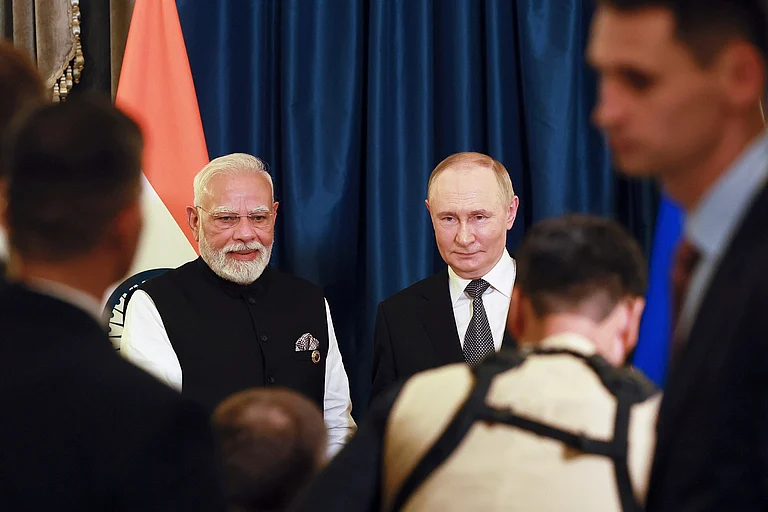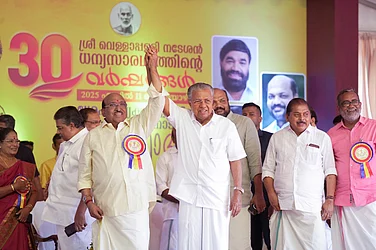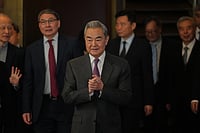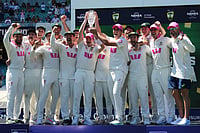
Trump’s tariff war is forcing countries to rethink their options on trade
From being on different sides of the Cold War divide, the India-US relationship has underwent almost a tectonic shift in the last 25 years and more
New Delhi's message has been clear: India’s strategic autonomy is not negotiable
US President Donald Trump’s latest tough talk about no trade negotiations with New Delhi unless it agrees to slash tariffs on goods, is forcing Prime Minister Narendra Modi’s government to hedge its bets on the United States and recalibrate its pro-American foreign policy tilt.
Trump’s tariff war is forcing countries to rethink their options on trade. The recent thaw in India-China ties following the military confrontation in the summer of 2020, is largely due to the new economic reality that both countries face. On Friday China foreign ministry spokesman welcomed the news that Prime Minister Modi would be attending the Shanghai Cooperation Organisation summit in China, at the end of the month.
India-Russia
On Friday, Modi and Putin spoke on the phone, with the Russian leader giving his take on the latest developments on Ukraine, ahead with his meeting with President Trump. The PM said he looked forward to hosting him in India. Both leaders also reaffirmed their commitment to further deepen India and Russia’s ``special and privileged strategic partnership.’’
Earlier this week, National Security Adviser Ajit Doval travelled to Moscow where he held talks with Sergey Shoigu, Secretary of Russia's powerful Security Council. Later there was a much publicised meeting with President Vladimir Putin. The Kremlin also announced that the Russian leader would be visiting India during the NSA’s visit.
New Delhi is quietly signaling to the US President, that it was not about to sacrifice its traditional ally at his whim. The messaging was clear, India’s strategic autonomy is not negotiable.
``Trump is acting with hubris. He thinks the US is powerful enough to dictate terms to all countries,’’ says Kanwal Sibal former Indian foreign secretary.
``He is unravelling India-US ties with no gain to the US. Foreign policy can’t be based on personal egos, Is the relationship with India worth $46 billion only. Even here it is not the full story. US has a trade surplus with India in services. His defence companies will lose market opportunities in India. India need not buy LNG from the US. Doors to potential nuclear cooperation will be closed. The Indo-Pacific strategy of the US will lose steam,’’ he adds. From being on different sides of the Cold War divide, the India-US relationship has underwent almost a tectonic shift in the last 25 years and more. Successive governments in New Delhi and Washington worked tirelessly to transform the relations to a flourishing economic and strategic partnership, driver largely too by China’s growth in Asia. All that has now come to a standstill for now.
Brazil and BRICS
Brazil’s president Lula da Silva called Modi on Thursday at a time when both India and Brazil are being hard hit by Trump’s 50 percent tariff on both countries. Though the 25 percent penalty on India for buying Russian oil will come into effect later this month. Trump has targeted Lula’s government also because of his close friendship with Brazil’s former right-wing president Jair Bolsonaro, who is also ideologically allied to Trump.
BRICS, the grouping of Brazil, Russia, India, China and South Africa, has been on Trump’s radar as he regards the outfit as anti-American and bent on one day replacing the US dollar as the currency for international trade. He has threatened additional tariffs on BRICS members.
Reuters, reporting from Brazil ahead of President Lula’s call to Modi, quoted him as saying that he would call the BRICS leaders to discuss a collective response to Trump’s tariffs. "I'm going to try to discuss with them about how each one is doing in this situation, what the implications are for each country, so we can make a decision. It's important to remember that the BRICS have ten countries at the G20," Lula said. A statement released by Lula’s office after his conversation with Modi said. “The leaders discussed the international economic scenario and the imposition of unilateral tariffs. Brazil and India are, to date, the two countries most affected.” Lula and Modi reiterated their goal of boosting bilateral trade to more than $20bn annually by 2030, according to the Brazilian president’s office, up from roughly $12bn last year, Reuters reported.
But India’s readout was more circumspect: merely saying ``Prime Minister recalled his visit to Brazil last month during which the two leaders agreed on a framework to strengthen cooperation in trade, technology, energy, defence, agriculture, health and people-to-people ties. Building on these discussions, they reiterated their commitment to take India-Brazil Strategic Partnership to new heights. The two leaders exchanged views on various regional and global issues of mutual interest. The two leaders agreed to remain in touch.’’
India’s Strategy
Unlike Trump’s constant digs at India, the Modi government has refused to take the bait and get into a slanging match with the US President. Instead the MEA in two separate statements have called the tariffs ``unfair, unjustified and unreasonable’ ’and calmly pointed that other countries including the Europeans and the US itself, continue to buy from Russia.
While waiting for the American delegation to arrive in New Delhi for trade negotiations with their Indian counterparts, officials are trying to work out what and where it can adjust tariffs allow US goods to enter without causing too much pain to the economy. However opening the agriculture and diary sectors is not negotiable. The Prime Minister himself has assured Indian farmers on Thursday that he will not let them down and that national interest is sacrosanct. India has signaled that it will not stop lifting Russian oil. Like every other country, India is looking to new markets and the current attempt at improving ties with China is also largely because of economic concerns following the tariff war Trump has unleashed on the world.
India will wait for the next round of trade negotiations and hope that something can be worked out.
New Delhi is also looking to next week’s meeting between Donald Trump and Vladimir Putin with hope. If the two leaders can come to an agreement on a ceasefire in Ukraine, secondary sanctions on Russian purchases will naturally not be imposed. Negotiations for a 25 percent agreement will become much easier for the two sides.









